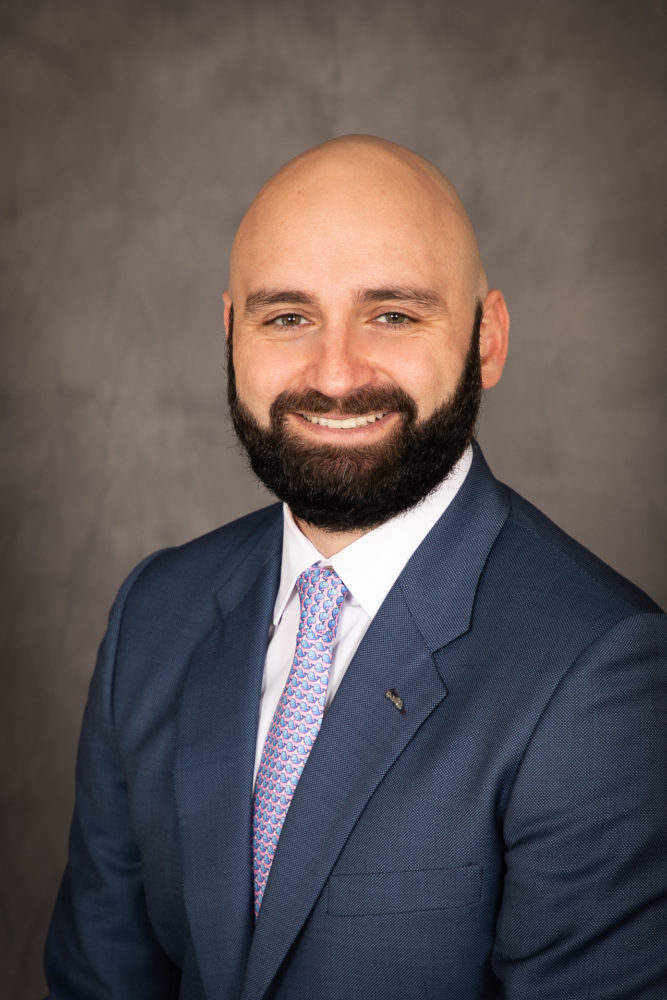CHOC welcomed Dr. Tammam Beydoun to the radiology department in October 2019. Tasked with kicking off CHOC’s Interventional Radiology program, his passion is to use minimally invasive procedures for blood vessel and lymphatic issues. We chatted with him about returning to his hometown of Southern Calif. and his time with CHOC so far.

Where did you receive your education and training?
I did my undergraduate degree at University of California, Irvine, then attended medical school at Touro University California College of Osteopathic Medicine. My radiology residency was at Michigan State University, and my pediatric diagnostic and interventional radiology residency was at Phoenix Children’s. Then, I completed my vascular interventional radiology fellowship at the University of Cincinnati.
What is your role at CHOC?
I was hired to build the new Interventional Radiology (IR) program at CHOC, which is now the only pediatric IR service in the county. IR uses imaging guidance to deliver minimally invasive, targeted treatments across the body. Building on a foundational knowledge of medical imaging, interventional radiologists can navigate the body using imaging to access, diagnose and treat nearly every part of the body, often with just the puncture of a needle. In the past, this used to require open surgical procedures, but now IRs can directly access a target through the skin without a scalpel; they can use the body’s innate transport systems (blood vessels, lymphatics, intestines, etc.) to reach nearly any target.
It’s a satisfying niche that can impact both children and adults. It’s rewarding to work with a large, multidisciplinary team alongside plastic surgery, hematology/oncology, dermatology, general surgery, otolaryngology and other specialties.
Do you have any special clinical interests?
I’m especially interested in biliary (bile duct) and vascular malformations. Abnormal blood vessels and lymphatics can be painful and can lead to a risk for infection and other complications. But using IR, these cases can be treated mostly with minimally invasive needle pokes.
What are some new programs or developments within your specialty?
The IR program itself is new to the county and brings important services to the children at CHOC. We can do a lot of procedures here to help reduce pain, recovery time, length of stay and cost for families. We hope to bring that to an outpatient setting in the future. We’re also working on building a dedicated space for IR, which will continue to supply the team with the most advanced equipment.
What would you most like providers in the community to know about your team at CHOC?
Most people don’t know that IR can affect almost every specialty, such as gastrointestinal, OBGYN, nephrology and many others. It’s a field that can touch almost every part of the body, and there can be a minimally invasive solution for almost every problem – even persistent nosebleeds.
Why did you decide to become a doctor?
If I had to choose a moment when I knew it was for me, I’d pick the Hoag Clinical Care Extender program in 2001. I would see physicians come into people’s lives and change them instantly. As a physician, you can quickly earn a patient’s trust and, with that, really change the course of their life for better. As a person who likes to take responsibility and initiative, I knew I wanted to do that for others. Even if I can’t help them myself, I wanted to be someone who could find them the care they need. It’s a privilege—a heavy privilege—and I don’t take that lightly.
What inspired you to work at CHOC?
It has been my goal to be at CHOC since 2012. I decided in residency that it was my goal to bring IR to SoCal and to CHOC. It’s taken a lot of time and effort, but it happened! This is my hometown, so it’s good to be home and to deliver care where I want to be. CHOC really is the place to go. It’s already a destination for very special care that’s not given anywhere else, and it just keeps improving. The trajectory is steep; CHOC is going places.
What drew you to interventional radiology?
I was drawn to IR because it’s kind of like being MacGyver—a lot of creative troubleshooting. In IR, no two cases are the same. You have a specific set of tools and can use them in any combination to do what you need to do, and you can modify it for any body part and almost any disease. You can go through the groin to work on the nose. You can work with glue, coils or stents. You can see through people with X-rays or CT scans. Each patient requires a novel approach, so I might have to come up with a different way to do something. That’s really fascinating to me.
If you weren’t a physician, what would you be and why?
An engineer. I love solving problems, troubleshooting and anything related to computers, servers or electrical equipment. I’m always taking things apart and rebuilding them.
And a racecar driver, but that dream might be past me now.
What are some of your outside hobbies?
I used to do a lot of outdoor rock climbing, which I’ve pared back on and now do safely indoors. I also love anything automotive, as well as snowboarding.
What have you learned from your patients?
Gratitude and patience. I can’t imagine what some patients go through. Even for the relatively short moment I’m involved in their lives, it can seem like it would be overwhelming. But they do it with patience and gratitude.




